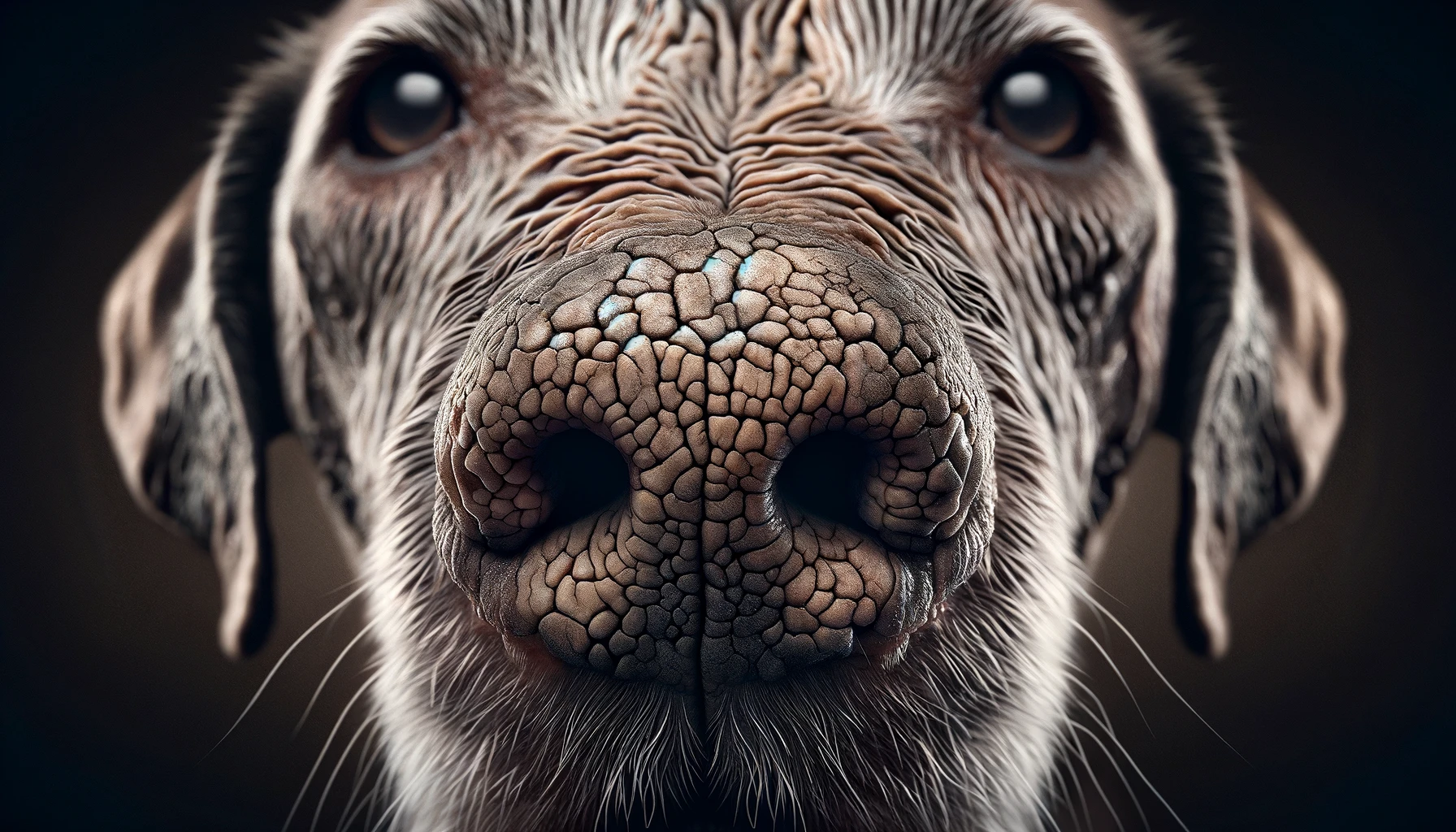Nasal cancer can be a devastating diagnosis for our canine companions. As responsible pet owners, we must be prepared to make difficult decisions regarding their well-being, including the timing of euthanasia.
In this article, we will explore the signs of nasal cancer, how to assess a dog’s quality of life, pain management options, and the progression of the disease. Our goal is to provide you with the knowledge and support needed to make an informed and compassionate decision during this challenging time.
Key Takeaways
- Recognizing the signs of nasal cancer in dogs, such as persistent nasal discharge, sneezing, difficulty breathing, nosebleeds, and facial swelling.
- Assessing the dog’s quality of life by monitoring physical discomfort, evaluating daily activities, assessing pain levels, recognizing changes in behavior, and considering the dog’s ability to engage in activities.
- Understanding pain management options for dogs with nasal cancer, including nonsteroidal anti-inflammatory drugs (NSAIDs), opioids for moderate to severe pain, palliative care, and complementary therapies such as acupuncture and massage.
- Monitoring the progression of nasal cancer in dogs through imaging tests, biopsies for tissue analysis, determining the stage and severity of the cancer, evaluating the effectiveness of treatment options, and tracking the tumor’s response to treatment.
Recognizing the Signs of Nasal Cancer
Recognizing the signs of nasal cancer in dogs requires vigilant observation and thorough knowledge of the disease’s clinical manifestations. It is crucial for dog owners to be aware of these signs to ensure early detection and timely intervention. Nasal cancer can often be mistaken for other respiratory conditions, making it essential to differentiate between them.
Common symptoms of nasal cancer include persistent nasal discharge, sneezing, difficulty breathing, nosebleeds, facial swelling, and reduced appetite. However, these signs can also be indicative of other respiratory ailments, such as infections or allergies. This highlights the importance of consulting a veterinarian for an accurate diagnosis.
Once nasal cancer is confirmed, treatment options for dogs may include surgery, radiation therapy, chemotherapy, or a combination of these approaches. The choice of treatment depends on the stage and extent of the cancer, as well as the overall health and age of the dog. Surgery aims to remove the tumor, while radiation therapy and chemotherapy target any remaining cancer cells. Palliative care can also be implemented to improve the dog’s quality of life and manage pain and discomfort.
Assessing the Dog’s Quality of Life
Continuously monitoring the dog’s quality of life is essential when considering the decision to euthanize a dog with nasal cancer. As the disease progresses, the dog may experience a decline in overall well-being, including physical discomfort and a decrease in daily activities. End of life considerations become crucial in determining if euthanasia is the most compassionate choice.
Nasal cancer can cause symptoms such as difficulty breathing, chronic nasal discharge, and facial swelling, which can significantly impact the dog’s comfort. Pain management plays a crucial role in maintaining their quality of life. Regular consultations with a veterinarian will help assess pain levels and adjust medication accordingly.
Emotional support is equally important during this difficult time. Dogs with nasal cancer may exhibit changes in behavior, such as decreased appetite, lethargy, or withdrawal. Providing a calm and loving environment can help alleviate stress and anxiety. Offering familiar comforts, such as favorite toys or plush bedding, can also provide comfort and reassurance.
It is essential to consider the dog’s ability to engage in activities they once enjoyed. If their condition hinders them from participating in daily activities or causes severe discomfort, it may be time to consider euthanasia. The decision should always be made in consultation with a veterinarian, who can provide guidance based on their expertise and understanding of the individual dog’s condition.
Assessing the dog’s quality of life is a challenging and emotional process. While it is never easy to say goodbye, prioritizing their well-being and providing the necessary emotional and physical support will help ensure a peaceful transition.
Understanding Pain Management Options
To effectively manage pain in dogs with nasal cancer, veterinarians employ various options. Pain medication plays a crucial role in alleviating the discomfort experienced by these dogs. Nonsteroidal anti-inflammatory drugs (NSAIDs) such as carprofen and meloxicam are commonly prescribed to reduce inflammation and provide pain relief. Opioids, such as tramadol and fentanyl, may also be used to manage moderate to severe pain.
In addition to medication, palliative care is an essential component of pain management. Palliative care aims to improve the quality of life for dogs with nasal cancer by addressing their physical, emotional, and social needs. This may involve providing a comfortable environment, minimizing stress, and ensuring proper nutrition and hydration.
Other pain management options may include complementary therapies such as acupuncture, physical therapy, and massage. These techniques can help relieve pain, reduce inflammation, and promote relaxation in dogs with nasal cancer.
It is important for veterinarians to closely monitor the dog’s response to pain management strategies and adjust the treatment plan accordingly. Regular follow-up visits and open communication between the veterinarian and the pet owner are crucial in ensuring that the dog’s pain is effectively managed throughout the course of the disease.
Monitoring the Progression of the Cancer
In order to track the advancement of nasal cancer in dogs, veterinarians utilize a range of diagnostic tools and techniques. Progression monitoring is crucial in determining the appropriate treatment options for affected dogs. Through regular evaluations, veterinarians can assess the size and extent of the tumor, as well as observe any changes in the dog’s symptoms.
One common method used for progression monitoring is imaging tests, such as X-rays, computed tomography (CT) scans, and magnetic resonance imaging (MRI). These tests allow veterinarians to visualize the tumor and its impact on surrounding structures. Additionally, biopsies may be performed to obtain tissue samples for further analysis. These samples can provide important information about the type and stage of the cancer, helping veterinarians make informed decisions regarding treatment options.
Treatment options for nasal cancer in dogs vary depending on the stage and severity of the disease. They may include surgery, radiation therapy, chemotherapy, or a combination of these approaches. Progression monitoring plays a vital role in determining the effectiveness of these treatments and adjusting the treatment plan as necessary. Regular evaluations and monitoring allow veterinarians to track the tumor’s response to treatment, identify any complications, and make necessary adjustments to provide the best possible care for the affected dog.
Making the Difficult Decision to Euthanize
- Veterinarians face the challenging task of determining the appropriate time to euthanize dogs with nasal cancer. This decision is not an easy one, as it involves considering the dog’s quality of life and the emotional well-being of their owners. Supporting loved ones during the decision-making process is crucial, as they may feel overwhelmed and unsure about when to make this difficult choice.
During this time, it is important for veterinarians to provide clear and compassionate communication. They should explain the progression of the cancer, the potential treatment options, and the expected outcomes. By offering this information, veterinarians can help loved ones make an informed decision based on their dog’s individual circumstances.
Coping with grief after euthanizing a pet is a deeply personal experience. It is normal for owners to feel a profound sense of loss and sadness. Providing resources and support to help them navigate the grieving process is vital. This can include recommending pet loss support groups, grief counseling, or even just being available to listen and offer comfort.
Ultimately, the decision to euthanize a dog with nasal cancer is a heartbreaking one. Veterinarians play a crucial role in supporting loved ones during this difficult time and helping them cope with grief afterwards. By providing empathy, information, and support, veterinarians can guide families through this painful decision-making process.
Frequently Asked Questions
What Are the Treatment Options Available for Nasal Cancer in Dogs?
Nasal cancer in dogs presents a challenging condition where prompt treatment is crucial for the well-being of the animal. Various treatment options are available for managing nasal cancer in dogs, including surgery, radiation therapy, and chemotherapy. Additionally, alternative therapies such as immunotherapy and targeted drug therapy may also be considered.
It is important to consult with a veterinarian to determine the most appropriate treatment plan based on the individual dog’s condition and overall health.
Can Nasal Cancer in Dogs Be Prevented?
Preventive measures for nasal cancer in dogs involve minimizing exposure to known risk factors. While there is no surefire way to prevent nasal cancer, certain diet and lifestyle choices may help reduce the risk.
Providing a well-balanced diet with plenty of fruits and vegetables, avoiding exposure to environmental toxins such as secondhand smoke or air pollution, and regular veterinary check-ups can all contribute to a healthier lifestyle for your dog and potentially decrease the likelihood of developing nasal cancer.
What Is the Average Life Expectancy for a Dog Diagnosed With Nasal Cancer?
The average life expectancy for a dog diagnosed with nasal cancer can vary depending on several factors. It is important to note that nasal cancer in dogs can be challenging to treat and often has a guarded prognosis.
Survival rates can range from a few months to a year or longer, depending on the extent of the cancer and the treatment options pursued. However, it is crucial to prioritize the dog’s quality of life, and palliative care may be considered to manage symptoms and improve comfort.
Are There Any Alternative Therapies or Complementary Treatments That Can Be Used Alongside Conventional Treatments?
Alternative therapies and complementary treatments can often be used alongside conventional treatments for nasal cancer in dogs. These additional treatment options can help improve the overall well-being of the dog and may provide some relief from symptoms or side effects of the conventional treatments.
It is important to consult with a veterinarian who specializes in oncology to determine the most appropriate combination of therapies for each individual dog.
Are There Any Support Groups or Resources Available for Dog Owners Dealing With the Emotional Toll of Nasal Cancer in Their Pets?
Support group options and emotional toll resources can be invaluable for dog owners dealing with the challenging journey of nasal cancer in their pets. These resources provide a safe space for individuals to share their experiences, seek advice, and find emotional support.
Support groups can be found both online and offline, offering a network of empathetic individuals who understand the unique emotional challenges of dealing with a pet’s illness.
Additionally, there are numerous online resources available that offer information, guidance, and coping strategies to help dog owners navigate the emotional toll of nasal cancer in their beloved pets.
Conclusion
In conclusion, recognizing the signs of nasal cancer in dogs is crucial for timely intervention and decision-making. Assessing the dog’s quality of life, understanding pain management options, and monitoring the progression of the cancer are essential steps in providing the best possible care.
Ultimately, the difficult decision to euthanize may need to be made to prevent unnecessary suffering. Compassion, empathy, and professional guidance should guide this challenging process.






